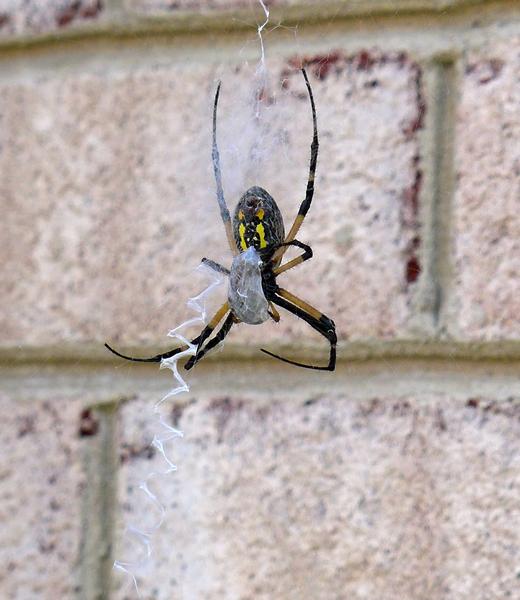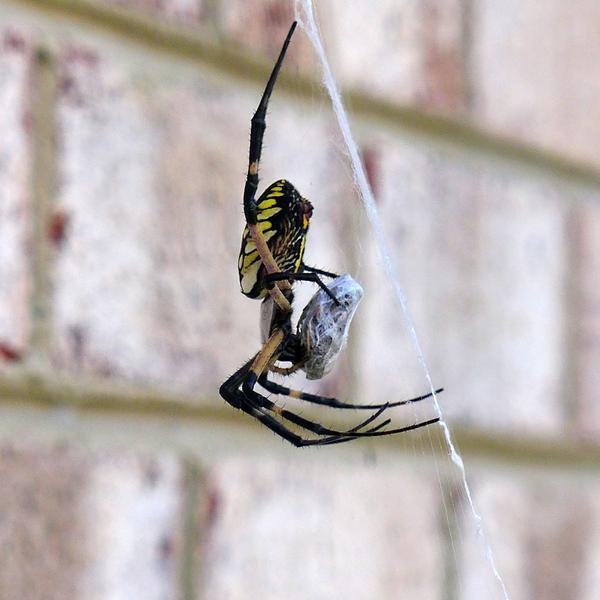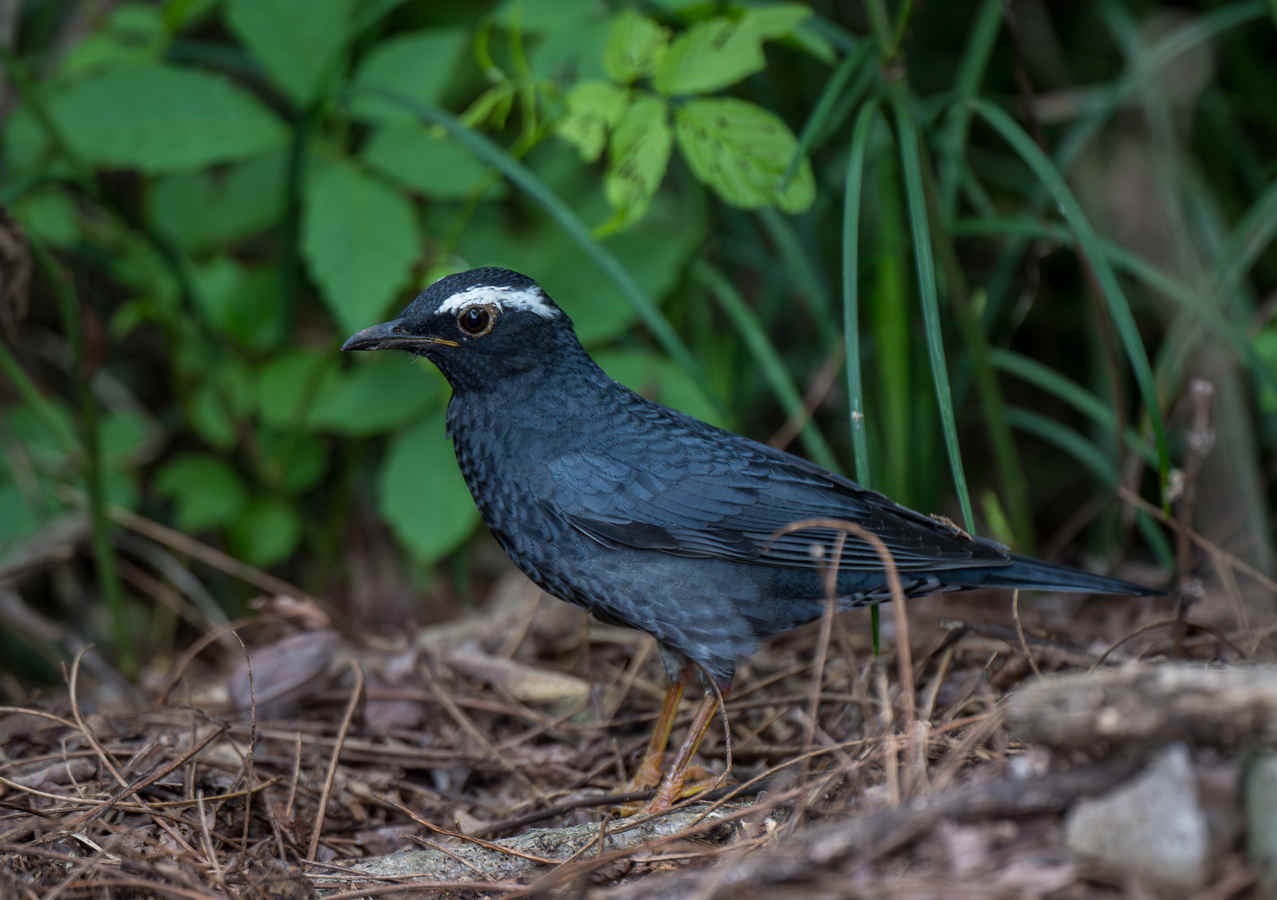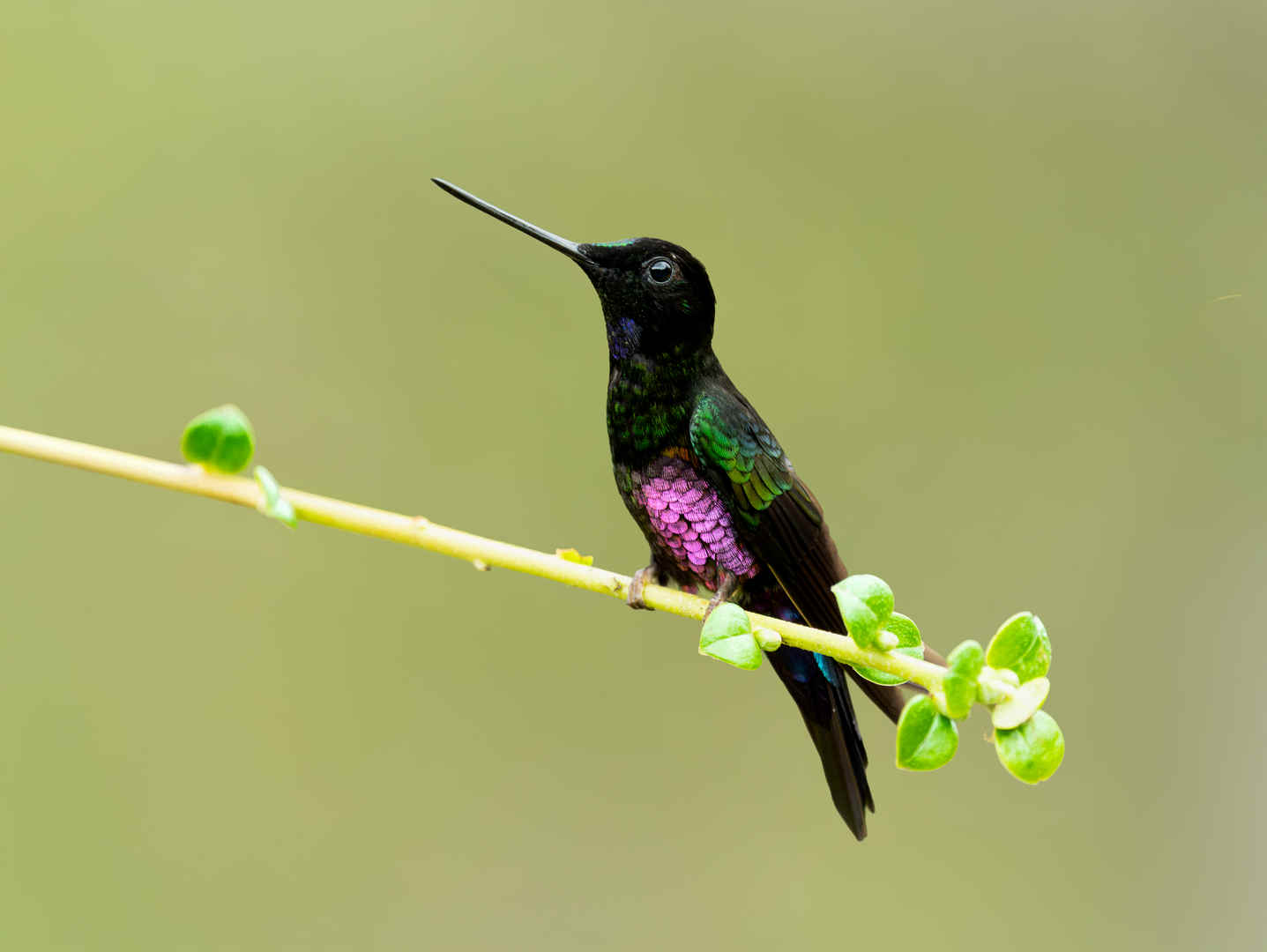PROTECT YOUR DNA WITH QUANTUM TECHNOLOGY
Orgo-Life the new way to the future Advertising by Adpathway Yellow garden spider on zigzag web, July 2010 (photo from Wikimedia Commons)
Yellow garden spider on zigzag web, July 2010 (photo from Wikimedia Commons)3 November 2025
By November adult orb weaver spiders have died and left behind overwintering egg sacs to hatch in early spring. The zigzag webs are gone but there is new scientific research about their purpose. Why do these round, almost invisible webs of Argiope spiders have thick prominent zigzags on them?
The zigzag web decorations are called stabilimenta, a word whose Latin origin means “stabilizer.” Unproven past theories on their purpose include:
- For stability? No. The decorations are only loosely attached to the web.
- To camouflage the spider?
- To draw notice to the web so large animals don’t break it?
- To attract prey by reflecting UV light?
- To attract a male?
An October 29 study in the journal PLOS One offers yet another explanation. Instead of stabilizing the spider web’s structure, the filaments help out spiders by allowing the vibrations of a stuck animal to disperse throughout the entire web, the research found. This in turn helps the spider know exactly where its prey is on the web structure, they write.
— Smithsonian Magazine: These Mysterious ‘Decorations’ in Spiderwebs Might Help Spiders Better Locate Their PreyTo reach this conclusion, scientists created computer simulations of prey hitting Argiope bruennichi spider webs based on photographs of the stabilimenta. They concluded that when prey hit the web at a tangent the stabilimenta amplified prey vibrations throughout the web. This might help the spider find the prey.
 Yellow garden spider wraps her prey, Sept 2017 (photo by Kate St.John)
Yellow garden spider wraps her prey, Sept 2017 (photo by Kate St.John)But …”The actual impact of the stabilimenta may be limited, the researchers admit. For now, they write, the true reasons behind the spidery structures remain largely unknown, with many hypotheses still untested or lacking experimental validation.” — from Smithsonian Magazine.
 Yellow garden spider female with prey, Sept 2017 (photo by Kate St.John)
Yellow garden spider female with prey, Sept 2017 (photo by Kate St.John)Read more about the research at Smithsonian Magazine: These Mysterious ‘Decorations’ in Spiderwebs Might Help Spiders Better Locate Their Prey.























 English (US) ·
English (US) ·  French (CA) ·
French (CA) ·